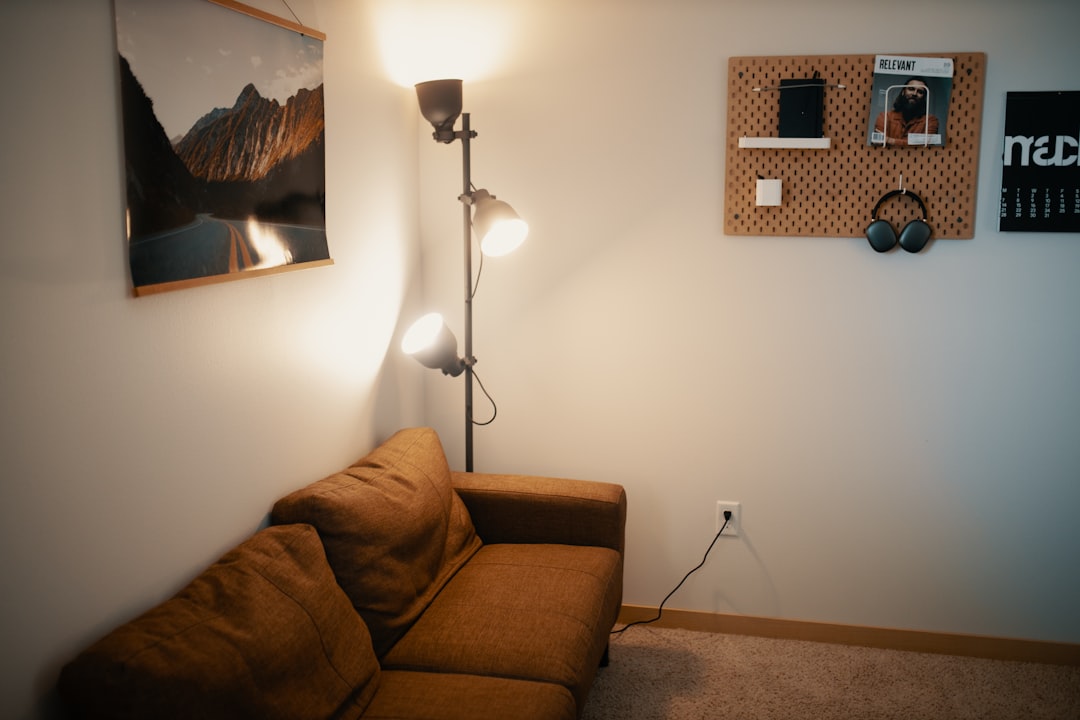Living in an apartment comes with unique challenges when it comes to audio setup, particularly with low-frequency sounds produced by subwoofers. While a deep, rich bass adds depth and realism to music, movies, and games, it can quickly become a source of frustration for neighbors if improperly placed. Proper subwoofer placement is crucial in apartments, not just for optimal sound quality but also for maintaining peaceful neighborly relations.
Understanding How Subwoofers Work
Subwoofers are designed to reproduce low frequencies, usually between 20Hz and 200Hz. These sounds travel much further than higher frequencies and can easily pass through walls and floors. This is particularly problematic in apartment buildings where soundproofing is often minimal.
Additionally, bass frequencies aren’t highly directional. This means the human ear doesn’t easily detect where bass is coming from, giving more flexibility in placement compared to other speakers. However, that flexibility should be used wisely by taking room acoustics and structural considerations into account.
General Guidelines for Apartment-Friendly Subwoofer Placement
When trying to optimize subwoofer placement in an apartment setting, there are several important strategies one can follow:
- Start with the “Subwoofer Crawl”: This classic technique involves placing the subwoofer in the main listening position and walking around the room to find where the bass sounds best. Once that spot is found, place the subwoofer there.
- Avoid Corners: While placing a subwoofer in a corner will amplify bass due to boundary reinforcement, it can also lead to exaggerated lows and disturb neighbors through walls and ceilings. Corners should generally be avoided in apartment setups.
- Keep It Off the Floor: Whenever possible, elevate the subwoofer slightly using isolation pads or platforms. This reduces the direct transmission of low frequencies into the floor and helps decouple the speaker from the structure.
- Use Isolation Products: Isolation pads, risers, or even thick carpeting beneath a subwoofer can make a significant difference in reducing vibrations passed into shared floors or walls.
- Wall Proximity: Placing the subwoofer a few inches away from walls instead of pushing it all the way against them can reduce unwanted reflections and minimize neighbor disturbance.
Balancing Audio Performance and Neighbor Consideration
Living in an apartment means trying to enjoy powerful audio without disturbing others. Here are steps to find that balance:
- Lower the Volume: You don’t need maximum output to enjoy impactful bass. Many subwoofers sound rich and warm even at lower levels.
- Set the Crossover Right: Optimize the crossover frequency so your subwoofer works in harmony with your main speakers. This prevents overemphasis on lows and helps with even energy distribution.
- Room Correction or EQ Software: Many modern subwoofers or receivers include room calibration tools. Utilizing those can improve perceived audio quality without needing increased volume.
Another useful solution for late-night sessions is to use tactile transducers or bass shakers. These devices simulate bass by vibrating furniture, offering the feel of powerful bass without transmitting sound through walls and floors.
Ideal Room Spots for Subwoofers in Apartments
While every room is different, there are some standard locations that work better than others for subwoofer placement in small apartment spaces:
- Under or Behind the Couch: Especially when using isolation pads, placing the sub close to your primary seating area maximizes its effect with minimal volume.
- Next to Media Console: If the console isn’t against a shared wall, this is a solid spot for both form and function.
- Within a Bookshelf or Niche: Some subs are designed to fit into shelves or cabinets, which may help contain some of the sound energy.

Decoupling Techniques and Soundproofing Aids
One of the most common problems in apartment subwoofer setups is structure-borne noise — low-frequency energies that end up in the floors, walls, and ceiling. To minimize this, consider these approaches:
- Isolation Pads: These are foam or rubber bases that absorb vibrational energy.
- Subwoofer Platforms: Specially made platforms add additional decoupling and can even improve bass clarity.
- Thick Area Rugs: Placing a heavy rug or carpet under both the subwoofer and the listening area will dampen vibrations.
Adding acoustic panels or corner bass traps can further reduce unintended reflections and refine your audio experience. Even though these won’t directly stop bass from bleeding into neighboring units, they can reduce harsh echoes and improve clarity, allowing you to comfortably listen at lower volumes.
Working with Smaller Subwoofers
If neighbor tolerance is limited or you’re working with a small room, downsizing your subwoofer is wise. Many brands offer compact subwoofer models that still pack a punch while limiting disruptive output. When paired with proper placement and isolation, these smaller units can be surprisingly effective for apartment setups.
Additionally, consider using two smaller subwoofers instead of one large one. This allows for more balanced bass distribution throughout the room and potentially lower amplitude from each individual unit, creating a smoother and less intrusive listening experience.
Timing, Etiquette, and Consideration
Lastly, being thoughtful about when and how you enjoy your system goes a long way. Avoid cranking up the bass late at night, and if possible, let your neighbors know if you host a movie night or gaming session, especially if it gets louder than usual.

FAQs on Subwoofer Placement in Apartments
-
Q: Can I place my subwoofer on a shelf?
A: Yes, if the shelf is strong and the subwoofer is compact and designed for that purpose. Otherwise, it may cause unwanted vibrations or instability. -
Q: Should I face the subwoofer toward the wall?
A: It depends on the design. Some subs are down-firing or front-firing. Generally, avoid pointing it directly toward a shared wall to reduce transmission. -
Q: Is a ported or sealed sub better for apartments?
A: Sealed subs usually provide tighter, more controlled bass and are often better suited for apartment environments where overextension of low frequencies can cause neighborhood issues. -
Q: Can I use a wireless subwoofer in an apartment?
A: Yes, wireless subwoofers offer flexible placement options. Just ensure they still use proper isolation and aren’t placed near walls shared with neighbors. -
Q: Are bass traps necessary?
A: Bass traps help improve acoustic performance but aren’t essential for every setup. In smaller rooms, they can help clarify sound and reduce boominess.
In conclusion, subwoofer placement in an apartment requires a balance of performance, layout, and consideration. With proper placement strategies, some isolation tools, and a little etiquette, you can enjoy deep, satisfying bass without creating tension with your neighbors or compromising audio excellence.